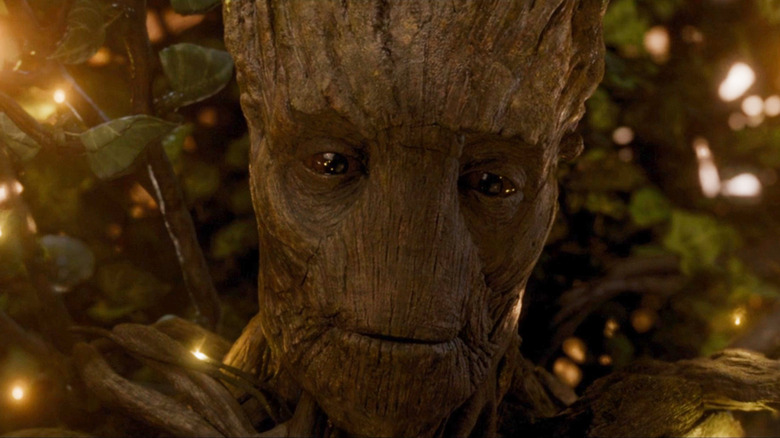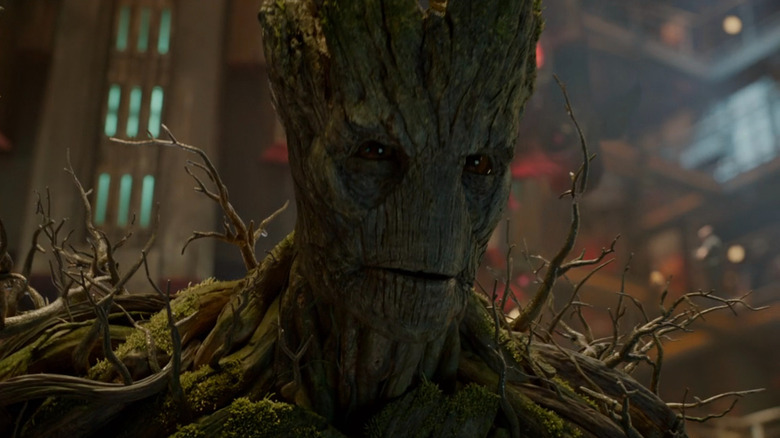Why Guardians Of The Galaxy's Visual Effects Team Hyper-Focused On Groot's Eyes
I am generally averse to completely CG-created characters within a live-action film. Very rarely do I find them to be believable creations, because there is an inherent disconnect when you place something that does not exist into a space that does. The high watermark of this is obviously the titular character in the "Paddington" films, and although a talking bear who wears clothes isn't real, there's something about how that character is rendered that allows me to connect with him on a very deep level. Yes, it is partly Ben Wishaw's wonderful voice performance, but one big reason is Paddington's eyes.
Eyes are always the most important part of a digital character because they are one of the more difficult things to get right. They are the windows into people's souls, and seeing digital eyes that have no life or definition to them immediately puts up a barrier for the audience. If the visual effects artists can get the eyes right, it helps mightily in toppling that wall. Outside of "Paddington," the best understanding of how digital eyes work comes from the "Guardians of the Galaxy" pictures, where they have to deal with not one but two principal CG characters in Rocket Raccoon and his tree buddy Groot.
Rocket Raccoon has the benefit of being an animal that naturally has eyes. He may be walking around on his back two legs all the time, but we understand what a raccoon looks like. Famously, trees, though alive, do not have eyes. Or even faces, for that matter. To make this giant tree man who only says three words a viable character who could make you laugh and even cry, they knew the eyes were the key to everything.
Finding the imperfections
Part of the trouble when designing and animating a character made entirely out of wood is you come to realize that he isn't exactly the most elastic and easily movable creature. I don't know if you've gone out and felt a tree trunk lately, but those things are about as solid as you can get. The visual effects team knew they would be limited in how Groot would be able to emote, so their main recourse was to focus as much as they could on the eyes. Speaking with FX Guide back in 2014, visual effects supervisor Nicolas Aithadi said of designing Groot:
"We spent a lot of time designing and building very complex eye dynamics [...] We put a lot of detail into his textures and things that would be displaced in his irises — we really wanted to get shadows in there. And we worked a lot on trying to break the symmetry. When you look at humans what makes the eyes interesting is the imperfections — trying to make these two irises not aimed at the same place – trying to make them strange and look more human. I could watch a turntable of Groot for ages because he had this really piercing look and this wisdom in his face."
Over the three "Guardians" movies, the effects team had to deal with a different iteration of Groot each time, yet the eyes always remained our way in. That's obviously most apparent in "Vol. 2" with Baby Groot, who has those giant eyes to maximize cuteness, but the emotions and humanity are just as apparent in the first and third films as well when he's an adult. It goes to show you that CG isn't always bad. You just need the ingenuity and resources to make it work.

